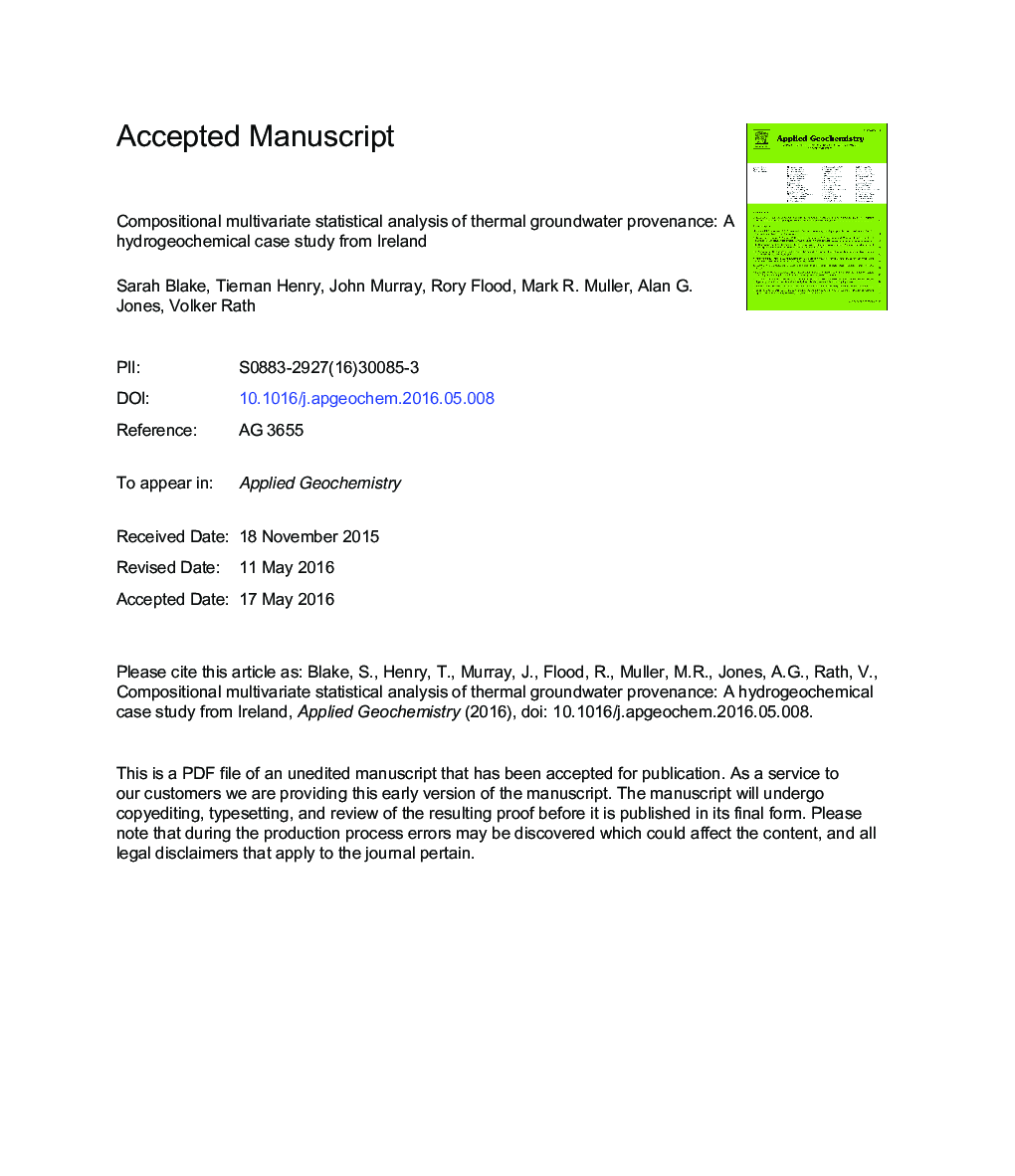| Article ID | Journal | Published Year | Pages | File Type |
|---|---|---|---|---|
| 5752652 | Applied Geochemistry | 2016 | 59 Pages |
Abstract
The results of the MSA were examined alongside detailed time-lapse temperature measurements from several of the springs, and indicate the influence of three important hydrogeological processes on the hydrochemistry of the thermal waters: 1) salinity and increased water-rock interaction; 2) dissolution of carbonates; and 3) dissolution of sulfides, sulfates and oxides associated with mineral deposits. The use of MSA within the CoDa framework identified subtle temporal variations in the hydrochemistry of the thermal springs, which could not be identified with more traditional graphing methods, or with a standard statistical approach. The MSA was successful in distinguishing different geological settings and different annual behaviours within the group of springs. This study demonstrates the usefulness of the application of MSA within the CoDa framework in order to better understand the underlying controlling processes governing the hydrochemistry of a group of thermal springs in a low-enthalpy setting.
Keywords
Related Topics
Physical Sciences and Engineering
Earth and Planetary Sciences
Geochemistry and Petrology
Authors
Sarah Blake, Tiernan Henry, John Murray, Rory Flood, Mark R. Muller, Alan G. Jones, Volker Rath,
